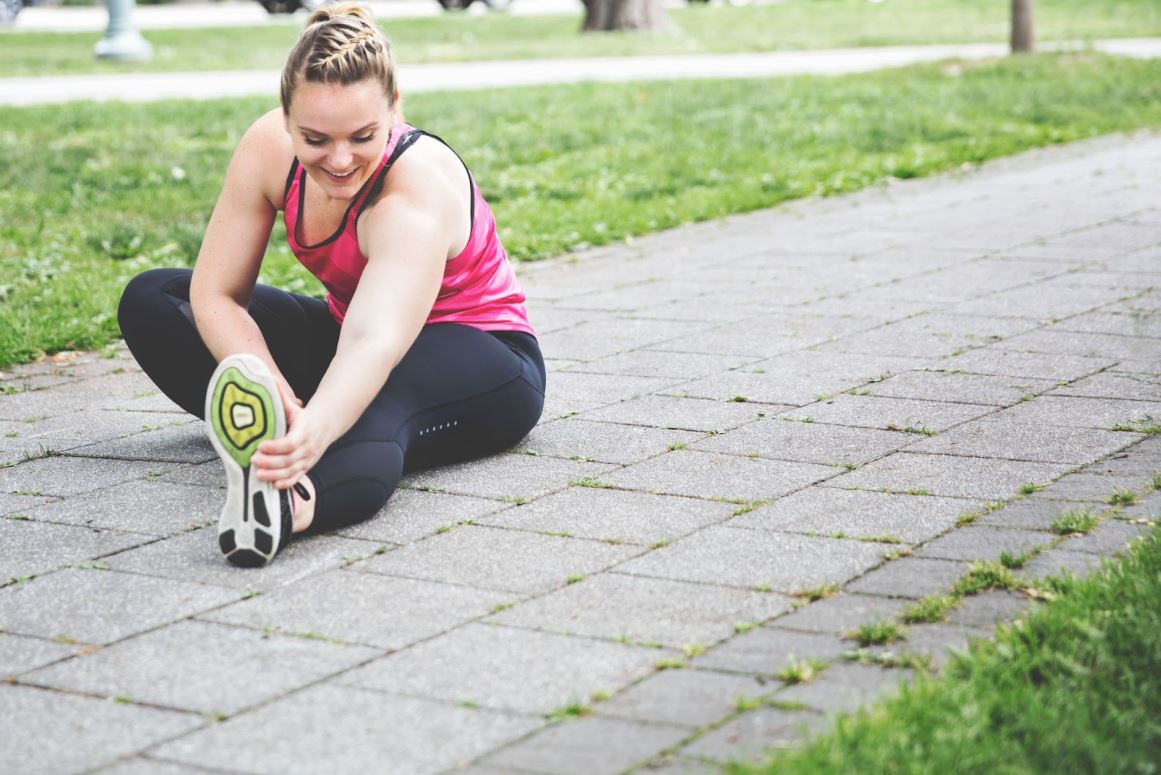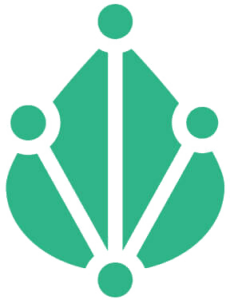
5.6.2023
How Stretching Can Relieve Your Joint Pain
Your old gym teacher was right: stretching is important and you’ll pay the price for it later if you don’t take it seriously. With our busy world it’s difficult to squeeze in post-workout stretching sessions, let alone twice a day. But did you know that stretching not only feels great for your sore muscles, but it can also help relieve your joint and muscle pain?
Do I have chronic joint pain?
Chronic pain is classified as pain that doesn’t go away. It can be consistently chronic but it can also be intermittent. Pain doesn’t discriminate between body types or ages and will happen to everyone eventually. If you’ve ever been injured you may have chronic pain that stems from that old injury, even if you took the proper measures to treat it.
Chronic pain can be due to disease or injury and is often debilitating. Many lifelong athletes “toughed out” their injuries when they were younger, leaving them with joints that have become stiff and achy. Don’t keep repeating the same mistake of your youth–if you feel that an injury is coming don’t force yourself to keep going!
Common symptoms of chronic pain include:
- Inflammation, especially after exercise
- Stiff joints
- Limited range of motion
- Persistent pain that lasts weeks, even years
- Decreased ability to perform tasks that require the joint
Common chronic injuries in middle-aged athletes
Our bodies never stop changing, even long past puberty. Since entering your 40s you may have noticed a decline in your strength, a decrease in muscle mass, and your muscles staying sore for longer periods of time. You might even be healing more slowly and becoming injured easily but it isn’t cause for concern. You can still be the top-notch athlete you always have been with some adjustments to your routine and regimen.
It’s nearly impossible for athletes at any age to avoid injuries, but the most common chronic injuries in middle-aged athletes are:
- Muscle strains and tears
- Stress fractures
- Tendinitis
- Knee injuries, such as torn ligaments or runner’s knee
- Rotator cuff tears, and more
Can stretching relieve joint pain?
Luckily, there are ways to naturally relieve your joint pain that don’t involve invasive surgery (or you reaching for the painkillers again). Natural medicine, or naturopathy, promotes whole-body wellness in order to prevent, treat, and heal diseases. This means no more nasty side effects from taking so many pain relievers or a grueling recovery time after surgery.
Stretching is beneficial not only for injuries but for ailments such as arthritis. Keeping your body immobile will only make you more stiff, even if you’re already in a great deal of pain. Stretching lubricates your joints and helps with your range of motion. But before you jump into a new stretching routine, make sure you know what movements aggravate your pain.
Beware of overstretching
It may sound counterintuitive, but stretching a muscle too much (particularly after feeling a twinge) or one that is too cold is a bad idea. When a muscle is strained or torn, the muscle has been pushed beyond its limits and creates a tear. This causes an outburst of pain and immediately begins the healing process with inflammation, your body’s foot soldiers.
Just like you shouldn’t run a 400 meter sprint without adequately warming up, you shouldn’t overstretch a cold muscle, either. Slow static stretches are great for sore muscles after a workout, but your muscles need more time to warm up before your workout. Incorporating a dynamic warmup is great for priming your body and keeping you healthy.
Incorporate static and active stretching into your warm up
Static stretches are those stretches that make you say, “Ooohhhh” because they’re providing relief just where you need them–your sore muscles and achy joints. Static stretches are often used in yoga, particularly at the beginning or end of a grueling session.
Active stretching, or dynamic stretching, requires you to work a little harder. Instead of holding your foot to stretch your quad, you’ll be pumping up your heart rate with something more active like high knees. Dynamic warmups are performed at a slower pace than your normal workout but fast enough to activate your muscles.
Your warm up should include movements that align with the planned activity or workout. For example, incorporating lunges and arm swings is great for tennis players but doesn’t make sense for soccer players. Depending on the activity level, ten to twenty minutes is plenty of time to prepare your muscles for your gym session or next game.
Some great exercises to add to your dynamic warm up include:
- Neck rolls
- Arm circles
- Hip swings
- Rolling your ankles
- High knees
- High skips
- Bounding, and more
Stretching for arthritis and joint pain relief
Arthritis is a painful condition that often plagues athletes of all ages and can affect multiple joints in the body. But adding a few stretches to your daily routine can vastly improve your pain and your game in and out of the gym and court.
If you suffer from arthritis in the wrists or hands, there are several exercises you can do to help alleviate the pain, such as:
- Making a fist
- Flexing the fingers individually
- Stretching your wrists
- Using a rubber band around your first to flex your thumb
Stretches for lower back and hip pain
Lower back pain is extremely common in athletes and middle-aged individuals regardless of activity level. With the rise of working from home and longer commutes, our lifestyles have become increasingly sedentary. This has led to spikes in weight, anxiety, depression, and numerous health issues.
You can help combat this with an active stretching routine that involves your entire body. Several muscles play a role in maintaining your core health so it’s important to be mindful of all of them when finding the right stretches for you.
A few great stretches for lower back and hip pain are:
- Pelvic tilts
- Knee to chest (one or both)
- Bridges
- Pretzel stretch (while on your back, placing your ankle on your opposite knee to stretch the hip flexors)
Yoga for lower back pain and hips
Yoga is great for not only lower back pain but for overall wellness. Yoga combines active and dynamic stretches with breathing exercises that nourish you and help relieve your sore, tired muscles. Many yoga positions can be modified to fit your activity level or accommodate any pain or injuries. Yoga has dozens of poses that are great for any part of your body–and chances are you already know a few!
The MedLink Health Solutions approach: healing your chronic pain naturally
At MedLink Health Solutions, we’re not your average doctor’s office. From the second you walk in our doors you’re welcomed with a bright smile and open heart. We don’t treat you like a number or like anyone else–we treat you like family because each of our patients is dear to our hearts.
We utilize natural medicine to not only treat you but heal you. Our patients love coming in for their treatments because they can see and feel the difference. We treat many common ailments and conditions and even prevent certain diseases from forming.
Your body is incredibly resilient, but fragile at the same time. It works hard to heal itself naturally, but oftentimes it isn’t enough, especially after a high-impact injury. Ignoring your symptoms or skipping out on your treatment will likely lead to long-lasting effects that will not only impact your daily life but your game on and off the field.
Healing you from within using regenerative medicine
Instead of masking your symptoms with prescription drugs or ignoring your personal experience, use regenerative medicine and ultrasound diagnostics to discover the root cause of your issues and heal you inside and out. As a lifelong athlete, you already have healthy habits implemented into your routine. But even the most dedicated health-conscious individuals can use some adjustments to their lifestyle, diet, or regimen.
Regenerative medicine is the branch of natural medicine where nature and science meet: modern scientific advancements work in conjunction with your body in order to properly treat and heal it. By using natural growth factors and proteins to give your body a natural boost, soft tissues can be repaired.
The regenerative medicine umbrella contains orthobiologics–a powerful tool in healing and repairing joints. But before we treat you we thoroughly evaluate you in order to create your customized treatment plan. This is done with a comprehensive initial evaluation where we take note of your symptoms, your mental state, your past medical history, diet, lifestyle habits, and more to truly understand your current state.
After your initial evaluation our team prepares you for your ultrasound. Ultrasound is a powerful tool for diagnosing injuries: instead of seeing a still image like in an x-ray or MRI, we can see that rotator cuff tear in real time. It’s a game-changer for pinpointing exactly where your injury is so we can treat it and get you back to being healthy. Once your diagnosis has been made, our team creates a personalized treatment plan that includes various therapies and nutritional guidance.
For more information on regenerative medicine and various therapies, click here.
Join the MedLink family
Hospitality and healthcare meet at MedLink Health Solutions. Our compassion for each patient coupled with advanced medical knowledge blends into a unique experience that only our team can deliver. We strive to be your doctor’s office for life so you can give your all at every pickleball game and gym session. We understand that life gets busy but your health should always be top priority–so you can play your best even past your prime.
Contact us today and schedule your appointment.


